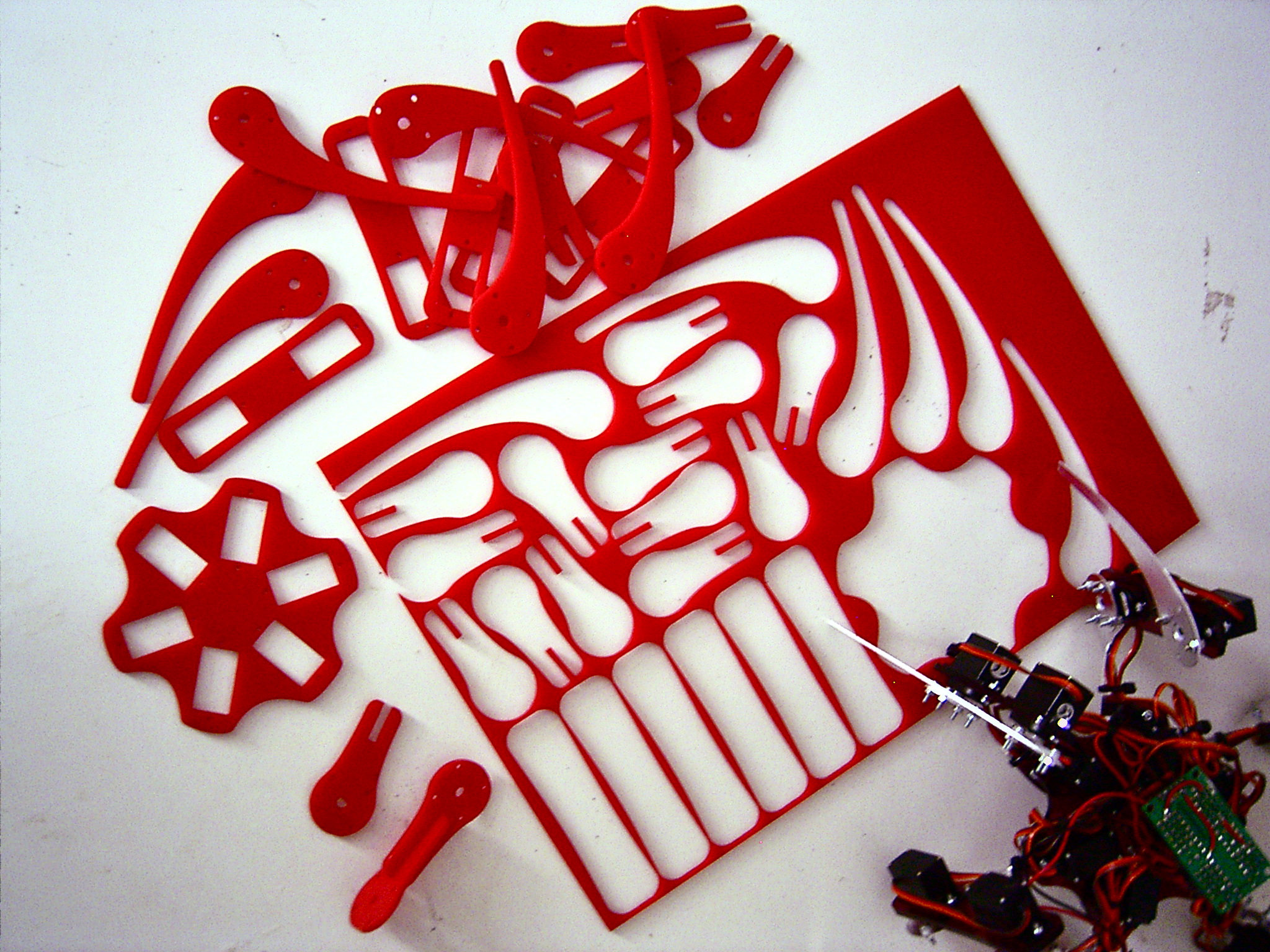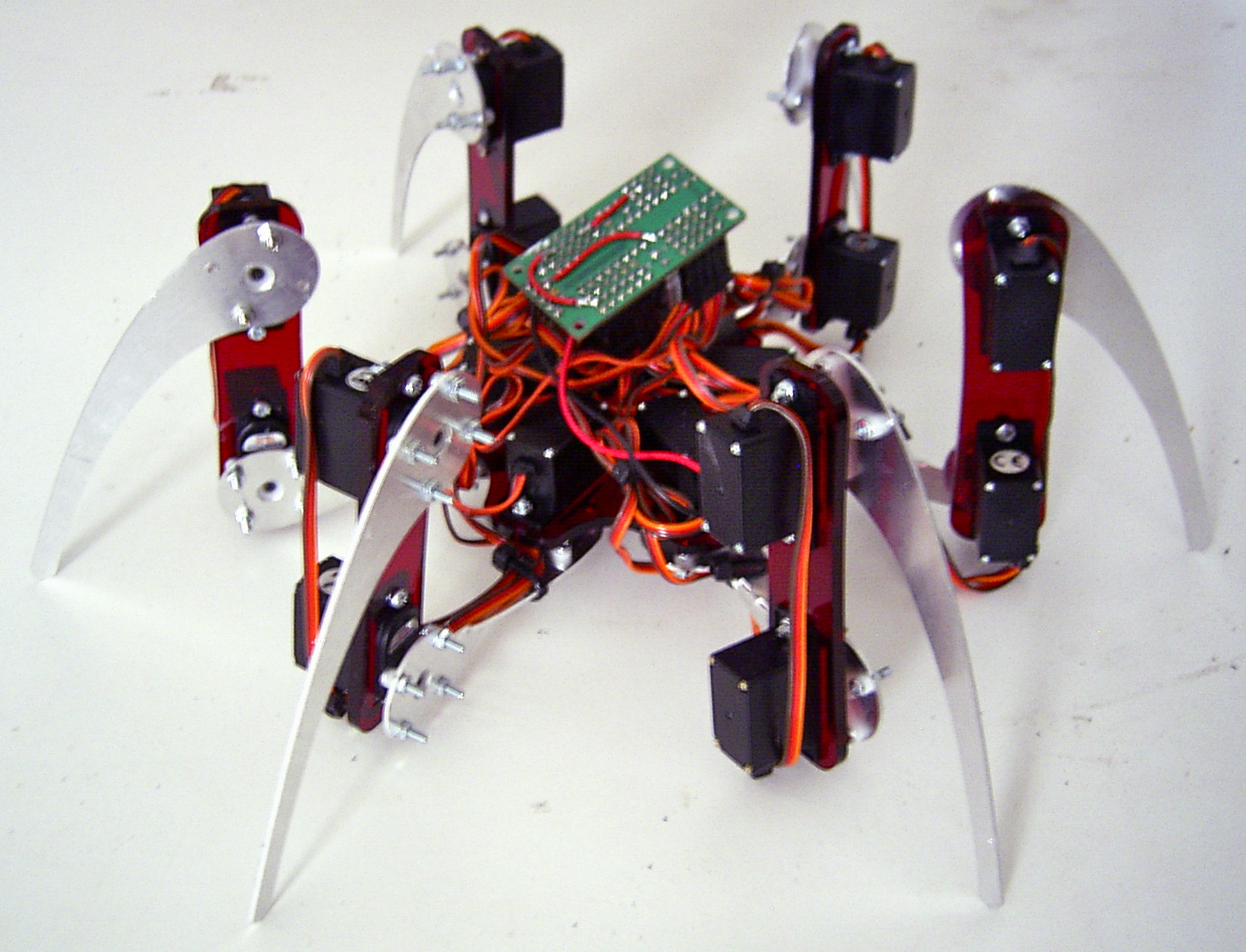Finally a very useful Arduino case design: small, sleek – and it allows for placing shields as well. Cut your own (with a fretsaw or lasercutter) using the following template: pdfRead more
Trotec Laser cutters are originally designed for cutting stamp rubber. A logical follow-up is to design the mechanical bits (read: wood-block) using the laser cutter as well.. With this design on the plate (image mirrored, of course) – which has been adapted from an old book on ‘wonders of technology’. The rolling stamp is 20Read more
Build a cool reproducible robot out of one A4 size sheet of laser cut material Objective In many Fablabs Lasercutters are accesible to anyone with a good idea. This machine is perfect for cutting trough sheet material with high precision. Reason enough to use it for building cool robots! The contest is open for anyoneRead more
IEEE Pervasive Computing magazine recently had an article featuring the hexapod, elaborating on FabLab power in University contextRead more
Together with PLANETART and FullFormFreedom invited to show some of the robots at the TechFest 2012 festival in Mumbai, India.Read more
During Fab6, the international fablab conference, the printerprinter has been presented during a session on ‘refab’ at the fablab Amersfoort. Results of the workshop, presentation slides etc. can be found on the wiki. The workshop resulted in a set of ‘house rules’ for refab in fablabs (but they equally apply to work in whatever labRead more
With the StarLC10 matrix repstrap ending up as pizza plotter, a start has been made building a new 3D machine using only the parts of 3 HP deskjet 840c printers. The printers contain many useful parts, the casing is made almost entirely out of ABS (printing material, hurray!) Especially the sliders come in nice, rectangularRead more
New A4 flat-kit design: a 18-servo 6-legged hexapod. It does not walk (yet) but servo control works and the mechanics look good: All parts can be cut from a single A4 sheet of acrylic glass. Other parts include 18 miniature servo’s (selling for 5EUR as TopLine mini-servo ES-05 JR (at Conrad Electronic)) and an ottantottoRead more
As presented for the first time on FAB6, using a Sharp gp2y0a02 sensor the flatpack-walker just got a little bit smarter. As long as the distance sensor is triggered, the robot walks backwards. The code is still pretty simple:
|
1 2 3 4 5 6 7 8 9 10 11 12 13 14 15 16 17 18 19 20 21 |
// avoid obstacles using Sharp G2P sensor on Analog 0 #include <Servo.h> Servo frontservo,backservo; char walkpattern[] = {60,100,100,100,100,60,60,60}; void setup(){ frontservo.attach(9); backservo.attach(10); } void loop(){ for(int n=0;n<4;n++){ if(analogRead(0)>500){ frontservo.write(walkpattern[2*n]); backservo.write(walkpattern[(2*n)+1]); } else{ backservo.write(walkpattern[2*n]); frontservo.write(walkpattern[(2*n)+1]); } delay(200); } } |
For years I have dismantled old printers, clocks, radio’s, disk drives, got all the screws out and sorted them in neat little boxes, taking the plastic gears, bearings, etc.. and storing them all separately. This all resulted in a workshop with a large amount of boxes, drawers, cabinets, all filled with a wealth of electronicRead more





